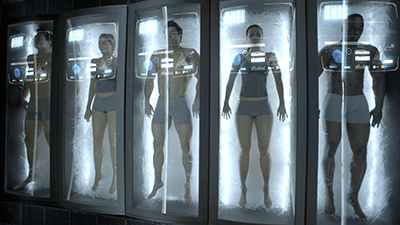A press release points me to The New York Sci Fi Film Festival being held this weekend:
This Friday marks the inaugural launch of The New York Science Fiction Film Festival, a new cinematic event debuting January 20-22, 2017 with a highly acclaimed lineup of science fiction, horror, supernatural and fantasy films and virtual reality entertainment. Valuing the importance of filmmakers from all walks of life, the festival presents to audiences modern masterpieces where storytelling transcends expectations and possibilities are endless.
Highlights include the USA premiere of Marcos Machado’s UFO’s in Zacapa (Ovnis en Zacapa) (2016), the NYC premiere of Marco Checa Garcia’s 2BR02B: To Be or Naught to Be (2016) and the East Coast premiere of Ian Truitner’s Teleios (2016). Among its many gems, the festival is also proud to screen Hiroshi Katagiri’s Gehenna: Where Death Lives (2016) starring Doug Jones (Hellboy) and Lance Henriksen (Alien), Lukas Hassel’s Into the Dark (2014) starring Lee Tergesen (The Strain) and a prominent virtual reality block featuring Ben Leonberg’s Dead Head (2016) and Ryan Hartsell’s I’ll Make You Bleed (2016) set to the music of the band These Machines are Winning.
The festival will run on January 20, 2017 at Instituto Cervantes (211 E 49th St, New York, NY 10017), January 21, 2017 at Producers Club (358 W 44th Street, New York, NY 10036) and The Roxy Hotel Cinema (2 Avenue of the Americas, New York, NY 10013) and January 22, 2017 at Anthology Film Archives (32 Second Avenue [at 2nd Street], New York, NY 10003).
Lots of space themed entries in the schedule. For example,

TITAN
Dir: Álvaro Gonzalez
12 minutes
Spain, 2015
Titan, Saturn’s largest moon, is the main stage of the Mission Cronos. Orpheus, one of the astronauts who have descended to its surface, is searching for organic life forms. This is his story.

The Last Journey of Paul WR
Dir: Romain Quirot
17 minutes
France, 2015
The red moon threatens the existence of our planet. Mankind only hope lies upon the shoulders of the enigmatic Paul WR, the most talented astronaut of his generation. Mysteriously, a few hours before the mission launch, Paul has disappeared.

TELEIOS
Directed by Ian Truitner
USA, 1 hr 22 minutes
2016
Five genetically engineered “perfect” humans are sent on a rescue mission to Titan, where only one man has survived a ruined expedition to retrieve a vital cargo. Under the stress of isolation in outer space, the five perfect humans begin to exhibit formerly-concealed character flaws that threaten to tear the mission (and their chances for survival) apart.


